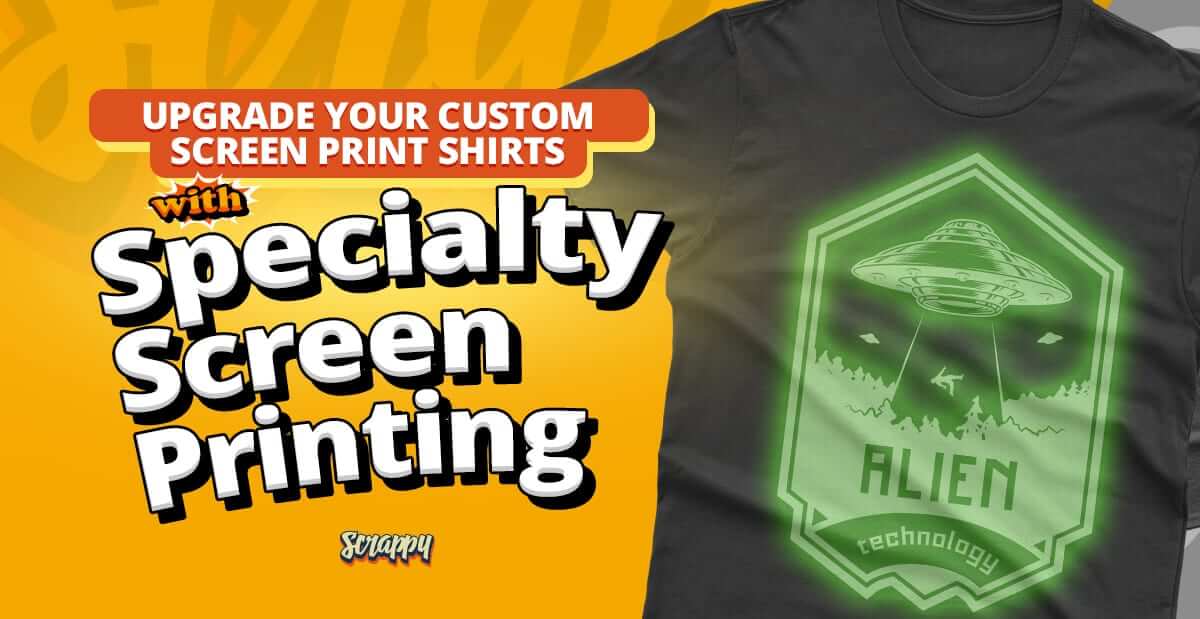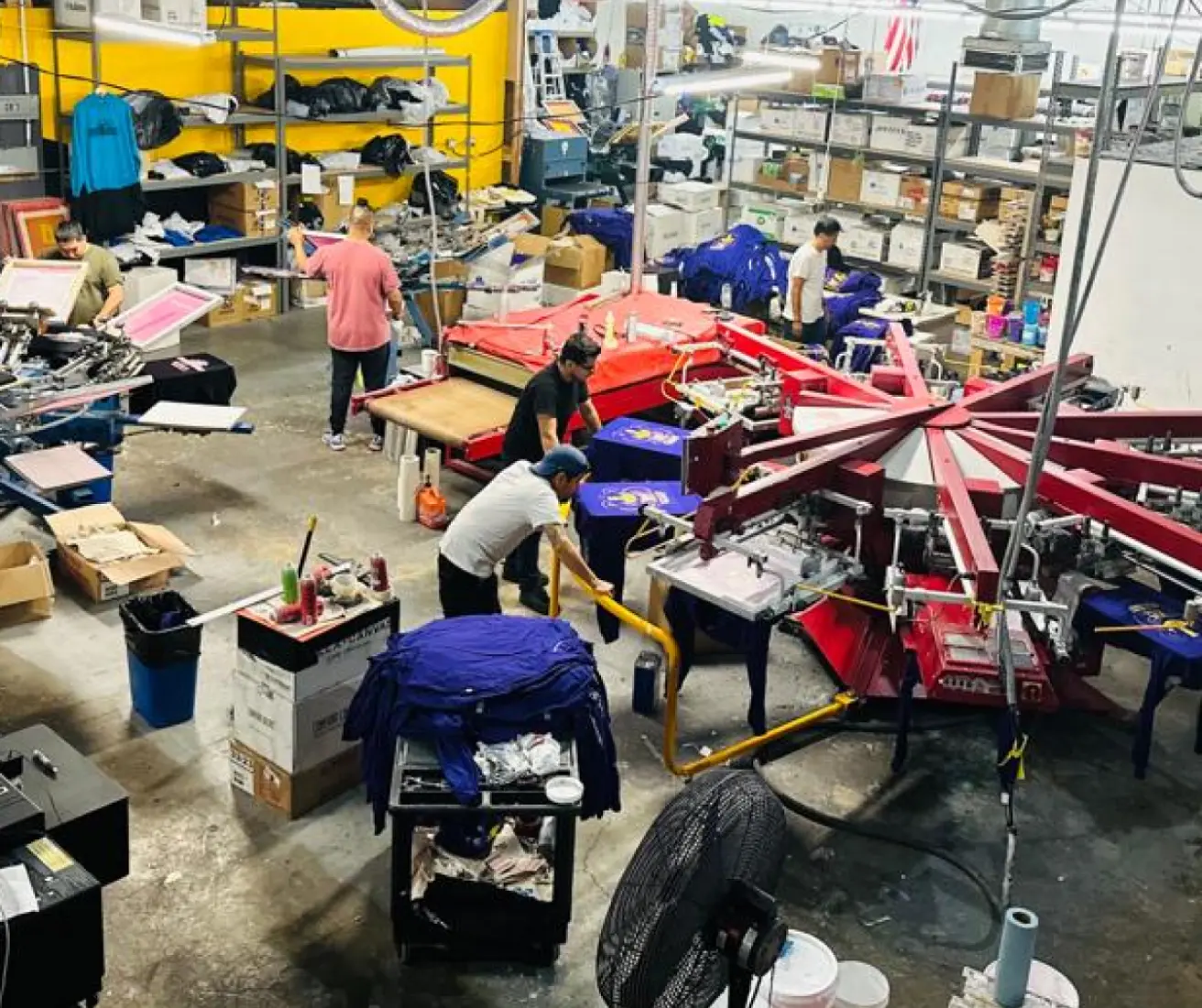Screen Printing Uncovered: Everything You Need to Find Out About T-Shirt and Garment Printing Techniques
If you've ever asked yourself exactly how those dynamic styles finish up on your favorite tees, you remain in the appropriate location. Screen printing is an interesting technique that incorporates art with strategy, providing unlimited possibilities for creativity. Recognizing the fundamentals, from equipment to ink selections, can considerably affect your outcomes. Ready to discover the vital elements that make screen publishing an art kind? Let's reveal the details that can raise your tasks.
The Fundamentals of Display Printing: How It Works
When you plunge right into display printing, you'll discover it's both an art and a scientific research. At its core, screen printing entails producing a stencil, or display, that permits ink to go through only in details locations (screen printing kit). You begin by selecting your style and preparing your display with a light-sensitive solution. Once you expose this solution to light, it sets, leaving your style as a negative room.
Following, you'll mix your inks and prepare your printing surface. Placement the display over the material, then make use of a squeegee to press ink through the display onto the garment. This procedure needs precision, as you desire clear, vibrant prints. After printing, you'll treat the ink with heat, guaranteeing it sticks to the fabric and lasts via cleans. Each step is crucial, and mastering them will boost your display printing skills, transforming straightforward garments into special, expressive pieces.
Sorts Of Screen Printing Methods
Once you comprehend the essentials of display printing, it's time to check out the different methods that can boost your layouts. One preferred technique is conventional screen printing, where ink is pushed via a stenciled display.
If you're intending for fine details, think about discharge printing. This method removes color from the textile, leaving a soft, classic look. An additional option is plastisol printing, understood for its longevity and dazzling colors, making it a preferred for lots of brands. Finally, experiment with halftone printing to develop slope results and elaborate designs. Each strategy has its special appeal, so do not think twice to try them out to locate what fits your design best!
Vital Devices for Screen Printing
To accomplish stunning lead to display printing, having the right devices is fundamental. You'll need a tough screen printing framework, which holds the mesh that transfers your design onto the garment. Next off, buy top notch squeegees; these are necessary for using ink uniformly across the display. You'll also call for an excellent exposure unit to create your screens, in addition to a washout cubicle for cleansing them after use. A reputable warmth resource, like a conveyor dryer or heat press, is critical for curing your prints to ensure long life. Do not forget an appropriate work space, equipped with tables and storage for your supplies. Protective gear, such as handwear covers and masks, will certainly maintain you secure from chemicals and inks. With the right tools, you'll be well on your method to creating professional-quality prints.
Selecting the Right Inks and Products
When picking inks and products for display printing, you need to take right into account the kind of ink that functions best for your task. Consider textile compatibility to assure your layouts look terrific and last long. Also, explore green ink alternatives to make your printing procedure much more sustainable.
Kinds of Screen Inks
Picking the right screen ink is important for attaining dynamic, resilient prints that satisfy your project's requirements. There are a number of kinds of display inks to analyze. Specialty inks, such as metallic or glow-in-the-dark, can include one-of-a-kind effects to your layouts.

Fabric Compatibility Factors To Consider
Recognizing textile compatibility is crucial for achieving top quality display prints, particularly because various materials respond distinctively to different inks. Always evaluate your inks on example textile to assure they adhere properly and preserve shade stability. In addition, keep in mind that textile weight and texture can influence the final result, so selecting the ideal ink and product combination is crucial for your project's success.
Eco-Friendly Ink Options
Green inks are ending up being a preferred choice for display printers who intend to minimize their ecological impact while keeping top quality. When choosing inks, take into consideration water-based inks, which are less damaging and easier to tidy up compared to standard solvents. These inks bond well with materials, providing vivid outcomes without harmful chemicals. You may additionally explore eco-solvent inks that use fewer unpredictable natural compounds (VOCs), making them a more secure alternative for both your health and wellness and the earth.
Furthermore, look for inks made from sustainable resources, such as soy or vegetable-based alternatives. By selecting the appropriate inks and materials, you'll not only create sensational designs however likewise contribute to a much more sustainable printing process. Make the switch, and your prints will show your commitment to the environment!
Preparing Your Style for Display Printing

Submit Style Demands
To ensure your layout looks sharp and dynamic on material, you'll require to pay very close attention to submit format more info here demands for display printing. Start with vector files like AI or EPS, as they can be scaled without losing high quality. If you make use of raster pictures, opt for high-resolution documents, such as TIFF or PNG, preferably at 300 DPI. Prevent using JPEGs, as they can lose quality when resized. Additionally, make certain your design has a transparent history to avoid undesirable white edges on your prints. Maintain color modes in mind; CMYK is typical for screen printing, so convert your RGB develops as necessary - screen printing kit. By following these guidelines, you'll set your artwork up for an effective print.
Color Splitting Up Strategies
Shade separation is an important step in preparing your design for display printing, and grasping it can significantly boost your print high quality. You'll need to damage your style into private colors, as each color needs a separate screen during printing. This accuracy not just assures precise shade representation but likewise streamlines the printing procedure.
Resolution and Size
Achieving the ideal results in display printing starts with ensuring your design has the right resolution and size. Preferably, your artwork must go to the very least 300 DPI (dots per inch) for sharp, clear prints. Your last item might look pixelated and less than professional. if you utilize lower resolution.
When it pertains to dimension, take into consideration the measurements of your print area. Layout your artwork to match the final print dimension, preferably creating it in the actual dimensions you'll be publishing. This method, you'll stay clear of any unforeseen scaling problems.
Constantly inspect your style in both vector and raster layouts. Vector graphics can be scaled without shedding quality, making them ideal for screen printing. Preparing properly will assure your layout looks outstanding on every garment!
Step-by-Step Screen Printing Process
Display printing is a dynamic process that allows you to develop vivid layouts on different surfaces. To get started, you'll require a display, emulsion, and your selected ink.
Put ink onto the screen and make use of a squeegee to press the ink with the stencil onto the textile. Lift the screen meticulously you can try these out and let the print completely dry. You've effectively screen printed your style.
Tips for Successful Display Printing Projects
While you're diving into your display printing jobs, keep in mind that preparation is vital to success. Begin by collecting all your materials-- inks, screens, garments, and mops. A clean work area aids stop unwanted errors, so clean up prior to you begin.
Following, verify your art work is high-resolution and appropriately sized for your garment. Examine your screen for correct exposure and tidy it thoroughly to avoid spots. When mixing your inks, comply with the manufacturer's standards to achieve the right uniformity.
During printing, apply also pressure with your squeegee for consistent outcomes. Do not rush; take your time to confirm each print fulfills your criteria. After printing, allow your garments completely dry completely before dealing with or packaging them.
Last but not least, always maintain a sample of your benefit future recommendation. By doing this, you can analyze your progression and improve your techniques over time. Delighted printing!

Often Asked Concerns
How much time Does It Require To Establish a Display Printing Task?
Establishing a display printing work typically takes around half an hour to an hour. You'll prepare the displays, mix inks, and change journalism. The time varies based upon intricacy and experience, so stay organized!
Can I Print on Different Fabric Types Using the Very Same Strategy?
Yes, you can print on various material types using the very same technique, yet you'll require to change your setups and inks. Some fabrics absorb ink in different ways, so trying out warranties the most effective results for every material.
What Are Usual Errors to Avoid in Display Printing?
When display printing, prevent common blunders like utilizing the wrong ink, disregarding correct direct exposure times, or skipping pre-press checks. Constantly evaluate your setup and maintain tidy screens to guarantee high quality results each time.
Exactly How Can I Appropriately Tidy and Maintain My Screen Printing Tools?
To appropriately clean and maintain your display printing devices, you should routinely wash displays with appropriate solvents, examine mops for wear, and ensure all devices are saved dust-free and dry. Uniformity stops expensive fixings and improves efficiency.
Is Display Printing Eco-friendly Compared to Other Methods?
Display printing can be more environmentally friendly than other techniques, especially if you utilize eco-conscious materials and water-based inks. By choosing sustainable materials and practices, you decrease waste and lessen your effect on the world.
Display Printing Uncovered: Whatever You Need to Know Regarding T-Shirt and Garment Printing Methods
At its core, display printing includes creating a pattern, or screen, that allows ink to pass via only in details locations. Position the screen over the material, after that utilize a squeegee to push ink via click here for info the display onto the garment. One prominent technique is standard screen printing, where ink is pressed through a stenciled display.When choosing inks and products for display printing, you need to take into account the type of ink that functions ideal for your project.